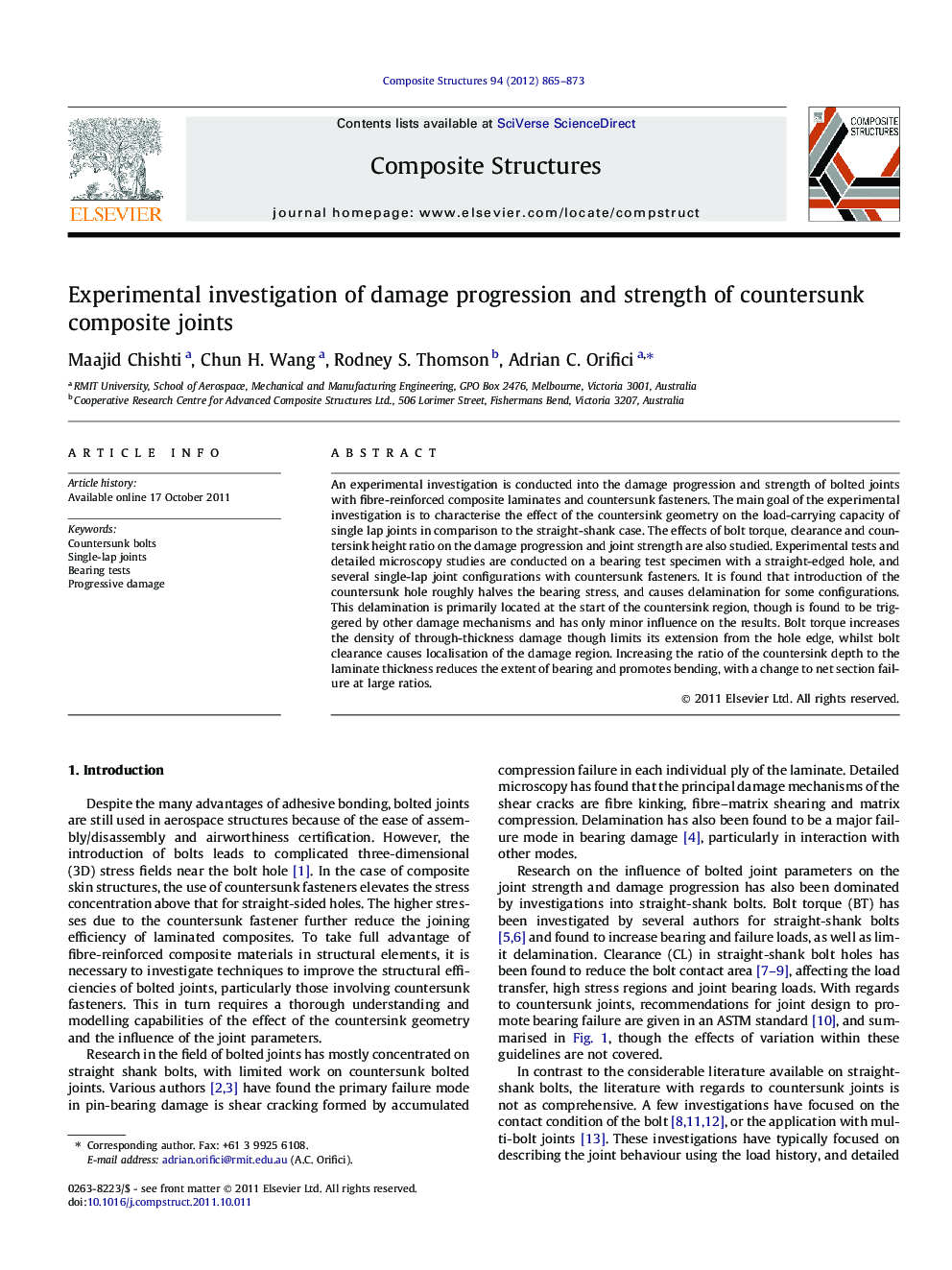| Article ID | Journal | Published Year | Pages | File Type |
|---|---|---|---|---|
| 252315 | Composite Structures | 2012 | 9 Pages |
An experimental investigation is conducted into the damage progression and strength of bolted joints with fibre-reinforced composite laminates and countersunk fasteners. The main goal of the experimental investigation is to characterise the effect of the countersink geometry on the load-carrying capacity of single lap joints in comparison to the straight-shank case. The effects of bolt torque, clearance and countersink height ratio on the damage progression and joint strength are also studied. Experimental tests and detailed microscopy studies are conducted on a bearing test specimen with a straight-edged hole, and several single-lap joint configurations with countersunk fasteners. It is found that introduction of the countersunk hole roughly halves the bearing stress, and causes delamination for some configurations. This delamination is primarily located at the start of the countersink region, though is found to be triggered by other damage mechanisms and has only minor influence on the results. Bolt torque increases the density of through-thickness damage though limits its extension from the hole edge, whilst bolt clearance causes localisation of the damage region. Increasing the ratio of the countersink depth to the laminate thickness reduces the extent of bearing and promotes bending, with a change to net section failure at large ratios.
